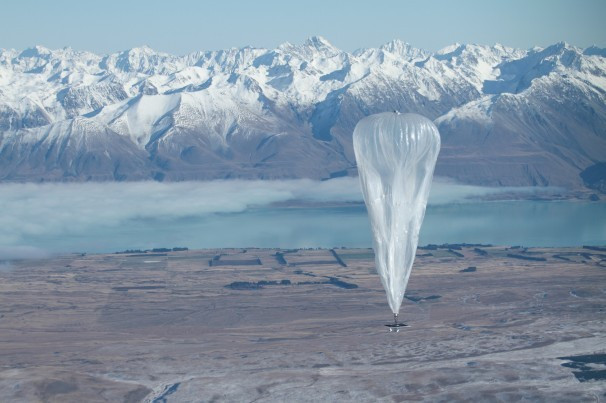Google Launches Balloons to Bring Internet to World's Remotest Areas

Google is testing a project to provide millions of people in the world's most remote areas with internet access using giant balloons in the Earth's stratosphere.
Developed by experts in the internet giant's top secret X Lab, 30 balloons were launched on Saturday 15 June in New Zealand as part of the trial, codenamed Project Loon.
Each balloon is 15 metres, (49.2 ft) in diameter. Beneath each balloon hangs a host of electronic equipment, including radio antennae, a flight computer, an altitude control system and solar panels to power the gear.
The balloons will drift on a path controlled by pilots on the ground at a height of about 12 miles (20km) from the Earth's surface. This is higher than commercial aircraft but lower than satellites.
The fleet will remain in the air for about 100 days and have the capability to broadcast an internet connection to an area about twice the size of New York to the ground.
Some 50 houses on the ground have been fitted with special receptors for the balloons' signal.
One of them was the house of farmer Charles Nimmo outside Christchurch, who was able to check the weather online for the first time from his remote home after the balloons were launched.
"It's been weird but it's been exciting to be part of something new," he told Sky News.
Though 2.2 billion people are now connected to the internet, 4.8 billion remain offline, and it is hoped that if the trials prove a success, thousands of balloons may be launched above the Earth, providing internet access to previously inaccessible areas, including swathes of Africa and east Asia.
"It's pretty hard to get the internet to lots of parts of the world," Richard DeVaul, chief technical architect at Google, told the BBC.
"Just because in principle you could take a satellite phone to sub-Saharan Africa and get a connection there, it doesn't mean the people have a cost-effective way of getting online.
"The idea behind Loon was that it might be easier to tie the world together by using what it has in common - the skies - than the process of laying fibre and trying to put up cellphone infrastructure."
Because the signals are broadcast on an unlicensed spectrum, Google could sidestep difficult wireless broadcasting regulations.
Project leader Mike Cassidy said: "It's a huge moonshot. A really big goal to go after. The power of the internet is probably one of the most transformative technologies of our time."
Cassidy said that in the next phase of the project, 300 balloons would be launched in a ring on the 40th parallel south from New Zealand through Australia, Chile, Uruguay, Paraguay and Argentina.
Critics, however, warned that the project may be difficult to realise.
"The practicalities of controlling lighter-than-air machines are well known because of the vagaries of the weather," said Prof Alan Woodward, visiting professor at the University of Surrey's department of computing.
Temple University communications professor Patrick Murphy told Sky News: "The nutritional and medical information, farming techniques, democratic principles - those are the wonderful parts of it. But you also have everyone wanting to drive a car, eat a steak, drink a Coke."
© Copyright IBTimes 2025. All rights reserved.






















